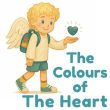It’s a question that echoes in the minds of many parents and caregivers.
In a world inundated with stories, how do we choose the one that will not only entertain but also nurture a child’s soul and mind?
What Children’s Book Should Every Child Read? It is not a trivial question; it’s a reflection of a deep desire to offer the best for our children’s emotional and cognitive development.
The search for “the ideal book” reveals a fundamental aspiration: to equip children with tools to navigate life’s complexities, understand their emotions, and build resilience. More than mere narratives, children’s books are portals to self-knowledge, empathy, and emotional intelligence.
Beyond Words: The Science Behind Emotional Reading
When exploring children’s literature, we’re not just looking for beautiful stories, but for vehicles for socio-emotional development.
Studies in neuroscience and developmental psychology have demonstrated the profound impact that reading, especially when focused on emotional themes, has on the child’s brain.
When a child connects with a character facing challenges or expressing complex feelings, areas of the brain associated with empathy and theory of mind (the ability to understand others’ thoughts and feelings) are activated.
Furthermore, exposure to narratives that address fear, joy, sadness, or anger in a healthy way allows the child to process these emotions in a safe environment.
It’s like an “emotion laboratory” where they can experience and learn to name what they feel, reducing the intensity of overwhelming feelings and promoting emotional regulation.
The Legacy a Book Leaves
So, what is the book every child should read?
The answer, while it may seem elusive, lies in the intention behind the choice and the emotional legacy the story leaves. It’s not about a single, universal title, but about finding a children’s book every child should read, one that meets essential emotional and developmental criteria, and becomes a companion in their inner world.
Emotional Validation: The story should show that all emotions are valid and that it’s normal to feel them. This helps the child understand they are not alone in their experiences.
Identification and Problem-Solving: Characters who face challenges and find constructive ways to deal with them offer role models and coping strategies.
Empathy and Perspective: Books that allow children to “step into the shoes” of other characters expand their ability to understand different viewpoints and feelings.
Courage and Resilience: Stories that celebrate overcoming adversity and inner strength inspire children to face their own fears and challenges with confidence.
“The Fear That Found Courage”: An Emotional Journey
With these aspirations in mind, and the profound search for tools that support emotional development, we created “The Fear That Found Courage”, the first book in “The Colours of the Heart” collection.
This book was carefully crafted to be more than just a story; it’s an invitation to a journey of self-discovery and emotional empowerment. It addresses fear in a gentle and accessible way, showing that fear is not something to be avoided, but rather understood and, with courage, transformed.
The narrative guides children to understand that having fear is natural, and that true strength lies in acknowledging that feeling and still acting.
By connecting with the characters in “The Fear That Found Courage,” children learn that courage is not the absence of fear, but the decision to move forward despite it. It’s a message that resonates with the principles of positive psychology, encouraging self-acceptance and resilience.
Final Thoughts: Choosing a Book is an Act of Love
Choosing a book for your child is an act of love and an investment in their emotional future. By seeking books that address emotions meaningfully, you are offering more than just entertainment: you are providing a solid foundation for your child’s emotional intelligence and mental well-being.
We hope The Fear That Found Courage becomes the children’s book every child should read to begin their emotional journey, a story that strengthens the heart, nurtures courage, and gently transforms fear into growth.
Let us know what emotion you’d love to see explored in our next story. Your insight could inspire a book that touches a child’s heart forever.
Discover our picture books that help families connect through faith and feelings — see all books here.
For additional guidance on emotional development, the Child Mind Institute offers trusted resources for families.
Through stories, we create a safe space to name what children feel, fear, or need. When we take time to truly see children’s emotions, we build more than calm, we build connection.
📖 References and Further Reading
Emotional Regulation and Children’s Literature:
Troop, R. J., & Goodkind, A. (2016). Reading as a Pathway to Emotional Literacy
Hoffmann, A., & Gill, S. (2020). Storybooks as Tools for Emotional Development in Preschool Children
Neuroscience of Reading and Child Development:
Richter, T., & Huk, M. (2020). How Reading Fiction Can Cultivate Empathy and Perspective-Taking in Children and Adolescents.
